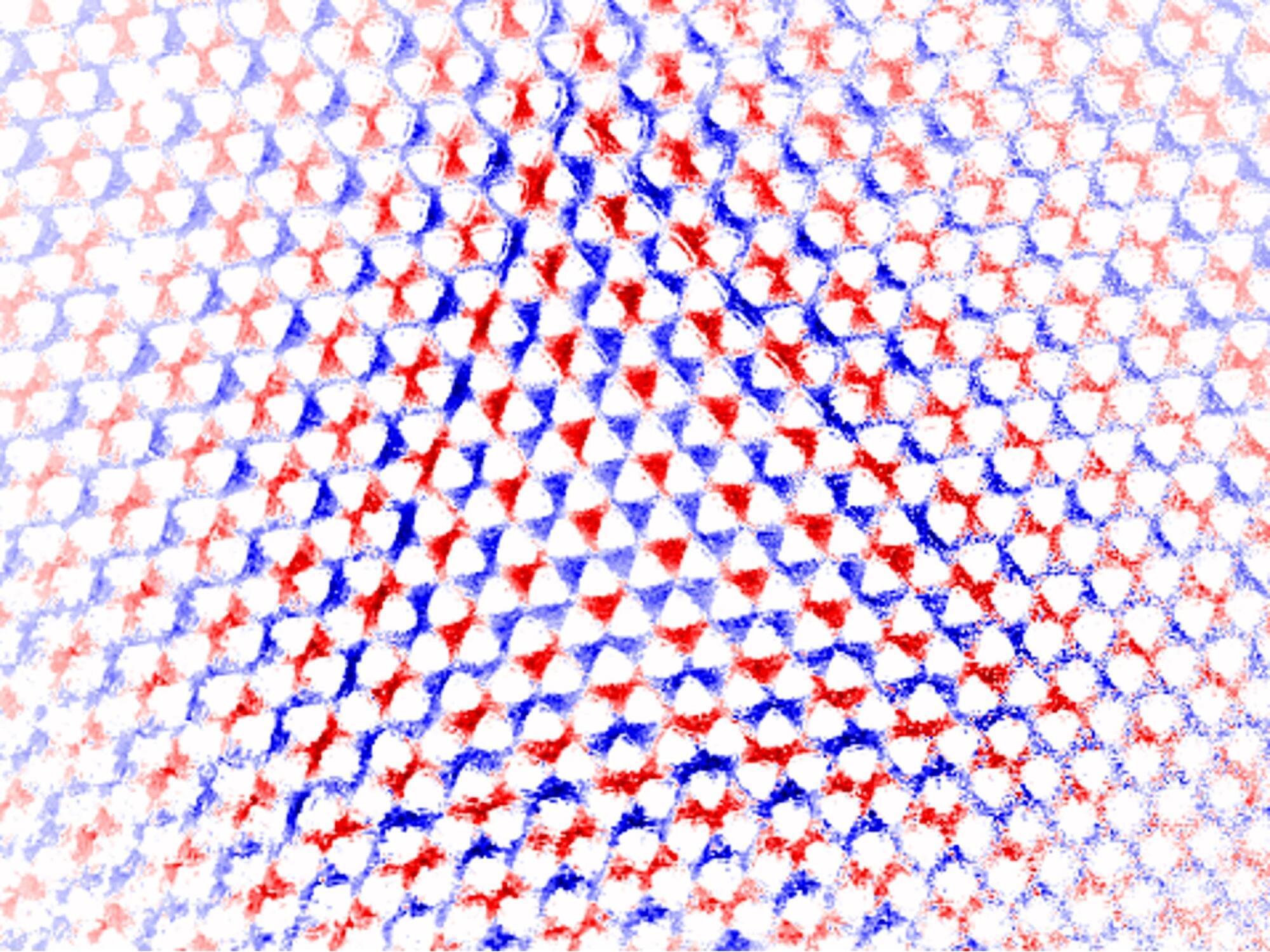Category: media & arts – Page 9
Life in 2525 AD (Episode 500)
In the year 2,525, humans, post-humans, and new species navigate a vast and vibrant future. Join us as we explore the lives, dreams, and struggles of a trillion-strong civilization.
Watch my exclusive video Antimatter Propulsion: Harnessing the Power of Annihilation — https://nebula.tv/videos/isaacarthur–… Nebula using my link for 40% off an annual subscription: https://go.nebula.tv/isaacarthur Get a Lifetime Membership to Nebula for only $300: https://go.nebula.tv/lifetime?ref=isa… Use the link gift.nebula.tv/isaacarthur to give a year of Nebula to a friend for just $30. Visit our Website: http://www.isaacarthur.net Join Nebula: https://go.nebula.tv/isaacarthur Support us on Patreon: / isaacarthur Support us on Subscribestar: https://www.subscribestar.com/isaac-a… Facebook Group:
/ 1,583,992,725,237,264 Reddit:
/ isaacarthur Twitter:
/ isaac_a_arthur on Twitter and RT our future content. SFIA Discord Server:
/ discord Credits: Life in 2525 A.D. Episode 500; May 22, 2025 Written, Produced & Narrated by: Isaac Arthur Editors: Merv Johnson II & Thomas Owens Graphics: Anthrofuturism Jarred Eagley Jeremy Jozwik Ken York YD Visual Space Resources CGI Udo Schroeter Select imagery/video supplied by Getty Images Music Courtesy of Epidemic Sound http://epidemicsound.com/creator Chris Zabriskie, “Unfoldment, Revealment”, “A New Day in a New Sector” Taras Harkavyi, “Alpha and…” Stellardrone, “Red Giant”, “Billions and Billions” Sergey Cheremisinov, “Labyrinth” 0:00 Intro 0:35 Dinner & Tales of the Future (Story Arc) 7:36 The Captain’s Concerns (Story Arc) 16:37 Episode 500 28:36 Antimatter Propulsion 30:08 On Colonizing Gas Giants and Energy Economics 44:45 Voyage Interrupted.
Get Nebula using my link for 40% off an annual subscription: https://go.nebula.tv/isaacarthur.
Get a Lifetime Membership to Nebula for only $300: https://go.nebula.tv/lifetime?ref=isa…
Use the link gift.nebula.tv/isaacarthur to give a year of Nebula to a friend for just $30.
Visit our Website: http://www.isaacarthur.net.
Join Nebula: https://go.nebula.tv/isaacarthur.
Support us on Patreon: / isaacarthur.
Support us on Subscribestar: https://www.subscribestar.com/isaac-a…
Facebook Group: / 1583992725237264
Reddit: / isaacarthur.
Twitter: / isaac_a_arthur on Twitter and RT our future content.
SFIA Discord Server: / discord.
Credits:
Life in 2525 A.D.
Episode 500; May 22, 2025
Written, Produced \& Narrated by: Isaac Arthur.
Editors: Merv Johnson II \& Thomas Owens.
Graphics:
Anthrofuturism.
Jarred Eagley.
Jeremy Jozwik.
Ken York YD Visual.
Space Resources CGI
Udo Schroeter.
Select imagery/video supplied by Getty Images.

This Ultra-Thin Drumhead Moves Sound With Almost No Loss — And May Change Tech Forever
When a drummer hits a drum, the surface vibrates and creates sound—a signal we recognize as music. But once those vibrations stop, the signal disappears. Now imagine a drumhead that’s incredibly thin, only about 10 millimeters wide, and covered in tiny triangular holes. Scientists have created exactly that, and it does something extraordinary.
Researchers at the Niels Bohr Institute in Copenhagen, working with teams from the University of Konstanz and ETH Zurich, discovered that vibrations can travel through this miniature membrane with barely any energy loss. In fact, the vibrations move more cleanly than signals in even the most advanced electronic circuits. This breakthrough, recently published in Nature, opens up new possibilities for how we transmit sound and information, especially in the race toward powerful new quantum technologies.
Phonons – Sound Signals or Vibrations That Spread Through a Solid Material.
Mitochondria Expert: This Supplement Reversed Vascular Aging by 20 Years
Discover how MitoQ reverses vascular aging by 15–20 years! Chief Scientific Officer Dr. Mitchell reveals research on mitochondrial health, showing 42% improvement in blood flow and superior results vs CoQ10 for longevity.
Some links are affiliate links so we will earn a commission when they are used to purchase products.
If you would like to support our channel please consider joining our Patreon / modernhealthspan.
MitoQ https://tinyurl.com/5n93fm3f MitoQ Pure https://tinyurl.com/3hxy9s7x.
Stemregen 15% discount Code MODERN https://tinyurl.com/45z968yr (Only available in the US)
AX3 Life Astaxanthin 20% discount code MODERN20 https://tinyurl.com/2t3w26nw.
All Muse devices 15% discount code MODERN https://choosemuse.com/MODERN
Renue By Science 10% discount code MHS: https://tinyurl.com/bdew4bfs.
NMN Powder https://tinyurl.com/syc7rwkh.
DoNotAge 10% discount code MHS https://tinyurl.com/6dbvhv87
D3/K2 https://tinyurl.com/528z26b7 NMN https://tinyurl.com/wyzj2f3d.
n1o1 Nitric Oxide 10% discount with code Modern https://tidd.ly/3IczGRW
15% off with code PRIME15 until July 12
n1o1 Nitric Oxide Lozenges https://tidd.ly/4eaJTdw.
Age-Defiance Face Cream https://tidd.ly/4eaJTdw.
Wellness Extract 10% discount Code MODERNWE Geranylgeraniol Essential http://wellnessextract.com/RICHARDWE Delta Gold Vit E
Oxford Healthspan Spermidine 15% Code MHS
Original https://tinyurl.com/hrxfnzpn, Gluten Free https://tinyurl.com/2s39pkzv.
Nuchido Time+ 20% discount of first purchase with code MODERN20 https://nuchido.com/MODERN
Pendulum 20% Discount Code HEALTHSPAN
Akkermansia https://pendulumtherapeutics.sjv.io/b… Daily https://pendulumtherapeutics.sjv.io/N… OmegaQuant 5% discount Code MODERN https://omegaquant.com/shop/ OneSkin 15% Discount: Code MODERN OS-01 Face https://oneskin.pxf.io/Z6Yg0K In this comprehensive interview, Dr. Mitchell, Chief Scientific Officer at MitoQ, breaks down the revolutionary science behind mitochondrial-targeted antioxidants and their impact on aging and disease prevention. *Key Topics Covered:* • How MitoQ delivers 90% bioavailability to mitochondria vs 10% for regular CoQ10 • Clinical study showing 42% improvement in flow-mediated dilation (vascular function) • Why mitochondrial dysfunction is the root cause of aging diseases • Exercise performance benefits: improved VO2 max, peak power, and recovery • Brain health and cognitive function improvements • Cardiovascular benefits: reduced oxidized LDL, improved artery flexibility • Immune system support and inflammation reduction • Diabetes prevention through improved glucose metabolism • Proper dosing protocols and supplement combinations *Research Highlights:* ✓ 25+ clinical studies and 800+ research papers ✓ Reverses vascular aging by 15–20 years according to leading researcher Doug Seals ✓ Professional cyclists and elite athletes using MitoQ for performance ✓ Ongoing trials for frailty, cognitive function, and neurovascular health ✓ 300+ independent researchers studying MitoQ applications Learn why targeting mitochondria may be the key to preventing age-related diseases and optimizing healthspan. Discover the science-backed approach to cellular energy and antioxidant protection that’s changing how we think about aging. ⏲️Chapters 0:00 The problem with mitochondria 3:34 How Mitochondria Dysfunction Occurs with Aging 5:43 Natural Protective Mechanisms and CoQ10 7:38 The Invention of MitoQ — Superior Mitochondrial Targeting 11:15 How MitoQ Differs from CoQ10 13:31 MitoQ vs CoQ10 — Research Comparisons 17:52 Cardiovascular Benefits and Flow-Mediated Dilation 23:32 Heart Muscle Function and Immune System Effects 28:16 Exercise Performance and V2 Max Improvements 32:04 Research Funding and Collaborative Programs 36:11 Diabetes Prevention and Glucose Metabolism 39:02 Brain Health and Cognitive Benefits 44:23 Dosing Protocol and Administration Guidelines 48:04 Supplement Combinations and Future Directions 🌐Links in this video MitoQ Home page https://www.mitoq.com/ Mitochondrial Collaborative Research Program https://www.mcrp.dev/ *************************************** Health claims Disclosure: Information provided on this video is not a substitute for direct, individual medical treatment or advice. Please consult with your doctor first. Products or services mentioned in this video are not a recommendation. Audio Copyright Disclaimer Please note that we have full authorization to the music that we used in our videos as they were created using the service WeVideo which provides the rights to the music. The rights are detailed in the terms of use that can be reviewed here https://www.wevideo.com/terms-of-use and any following inquiries should be addressed to [email protected]. ************************************************ #MitoQ #Mitochondria #Longevity.
Metabolic Daily https://pendulumtherapeutics.sjv.io/N…
OmegaQuant 5% discount Code MODERN https://omegaquant.com/shop/
OneSkin 15% Discount: Code MODERN OS-01 Face https://oneskin.pxf.io/Z6Yg0K
In this comprehensive interview, Dr. Mitchell, Chief Scientific Officer at MitoQ, breaks down the revolutionary science behind mitochondrial-targeted antioxidants and their impact on aging and disease prevention.
*Key Topics Covered:*
• How MitoQ delivers 90% bioavailability to mitochondria vs 10% for regular CoQ10
• Clinical study showing 42% improvement in flow-mediated dilation (vascular function)
• Why mitochondrial dysfunction is the root cause of aging diseases.
• Exercise performance benefits: improved VO2 max, peak power, and recovery.
• Brain health and cognitive function improvements.
• Cardiovascular benefits: reduced oxidized LDL, improved artery flexibility.
• Immune system support and inflammation reduction.
• Diabetes prevention through improved glucose metabolism.
• Proper dosing protocols and supplement combinations.
*Research Highlights:*
✓ 25+ clinical studies and 800+ research papers.
✓ Reverses vascular aging by 15–20 years according to leading researcher Doug Seals.
✓ Professional cyclists and elite athletes using MitoQ for performance.
✓ Ongoing trials for frailty, cognitive function, and neurovascular health.
✓ 300+ independent researchers studying MitoQ applications.
Learn why targeting mitochondria may be the key to preventing age-related diseases and optimizing healthspan. Discover the science-backed approach to cellular energy and antioxidant protection that’s changing how we think about aging.
Why Different Neuron Parts Learn Differently?
To try everything Brilliant has to offer—free—for a full 30 days, visit https://brilliant.org/ArtemKirsanov. You’ll also get 20% off an annual premium subscription.
Socials:
X/Twitter: https://twitter.com/ArtemKRSV
Patreon: https://patreon.com/artemkirsanov.
My name is Artem, I’m a graduate student at NYU Center for Neural Science and researcher at Flatiron Institute. In this video we explore a recent study published in Science, which revealed that different compartments of pyramidal neurons (apical vs basal dendrites) use different plasticity rules for learning.
Link to the paper:
https://www.science.org/doi/10.1126/science.ads4706
Outline:
00:00 Introduction.
01:23 Synaptic transmission.
06:09 Molecular machinery of LTP
08:40 Hebbian plasticity.
11:21 Non-Hebbian plasticity.
12:51 Hypothesis.
14:42 Experimental methods.
17:10 Result: compartmentalized plasticity.
19:30 Interpretation.
22:01 Brilliant.
23:08 Outro.
Music by Artlist.

Open House
Have you heard about the crazy guys who bought an entire tower to convert it into a vertical village? Yes, that’s us.
Do you want to walk the 16-floor tower and explore the space? Still on the fence, if you should become a citizen? Do you have questions about how you can get involved and co-create? Wanna hear updates on what happened in the last 2 weeks? This event is for you! 👩🚀
About us: We are transforming a 16-floor tower in the heart of San Francisco into a self-governed vertical village —a hub for frontier technologies and creative arts. 8 themed floors will be dedicated to creating tier-one labs, spanning AI, Ethereum, biotech, neuroscience, longevity, robotics, human flourishing, and arts & music. These floors will house innovators and creators pushing the boundaries of human potential in a post-AI-singularity world.
Satyendra Nath Bose
Satyendra Nath Bose FRS, MP [ 1 ] (/ ˈ b oʊ s / ; [ 4 ] [ a ] 1 January 1894 – 4 February 1974) was an Indian theoretical physicist and mathematician. He is best known for his work on quantum mechanics in the early 1920s, in developing the foundation for Bose–Einstein statistics, and the theory of the Bose–Einstein condensate. A Fellow of the Royal Society, he was awarded India’s second highest civilian award, the Padma Vibhushan, in 1954 by the Government of India. [ 5 ] [ 6 ] [ 7 ]
The eponymous particles class described by Bose’s statistics, bosons, were named by Paul Dirac. [ 8 ] [ 9 ]
A polymath, he had a wide range of interests in varied fields, including physics, mathematics, chemistry, biology, mineralogy, philosophy, arts, literature, and music. He served on many research and development committees in India, after independence. [ 10 ] .

How Colonizing Space Benefits Earth — The Ground Level Gains of a Galactic Future
Space colonization isn’t about abandoning Earth—it’s about transforming it. Discover how expanding into space can drive innovation, sustainability, and prosperity right here on the ground.
Watch my exclusive video Fishbowl Starships — Water As Shielding — https://nebula.tv/videos/isaacarthur-fishbowl-starships-water-as-shielding.
Get Nebula using my link for 40% off an annual subscription: https://go.nebula.tv/isaacarthur.
Get a Lifetime Membership to Nebula for only $300: https://go.nebula.tv/lifetime?ref=isaacarthur.
Use the link https://gift.nebula.tv/isaacarthur to give a year of Nebula to a friend for just $36.
Visit our Website: http://www.isaacarthur.net.
Join Nebula: https://go.nebula.tv/isaacarthur.
Support us on Patreon: https://www.patreon.com/IsaacArthur.
Support us on Subscribestar: https://www.subscribestar.com/isaac-arthur.
Facebook Group: https://www.facebook.com/groups/1583992725237264/
Reddit: https://www.reddit.com/r/IsaacArthur/
Twitter: https://twitter.com/Isaac_A_Arthur on Twitter and RT our future content.
SFIA Discord Server: https://discord.gg/53GAShE
Credits:
How Colonizing Space Benefits Earth: The Ground-Level Gains of a Galactic Future.
Episode 726.1; June 22, 2025
Written, Produced & Narrated by: Isaac Arthur.
Graphics: Bryan Versteeg, Jeremy Jozwik, Sergio Botero.
Select imagery/video supplied by Getty Images.
Music Courtesy of Epidemic Sound http://epidemicsound.com/creator.
0:00 Intro — What Space Isn’t.
3:59 The Limits of Exploration.
6:58 Real Reasons Space Helps Earth.
15:50 The Earthly Feedback Loop.
20:58 A Better Earth, Among the Stars.

PRESS RELEASE: “Space Renaissance for All Gallery” aboard The Exploration Company’s Nyx capsule: Launch of “Mission Possible” on 22 June
The Space Renaissance 4 All Gallery (www.sr4allgallery.com) is an international initiative, to carry a Science-Technology-Art-Partnerships payload into lowEarth orbit, where it will circle the planet before returning for scientific study and public engagement. The Gallery is inside Nyx capsule of The Exploration Company that is scheduled to launch aboard a SpaceX Falcon 9 from Vandenberg Base, California on 22June 2025 23:15 CEST, orbit Earth, reenter the atmosphere and return intact — making its payload available for scientific and technical evaluation, museum exhibitions, and public outreach. It was initiated by LUNEX CEO and SRI President Prof. Bernard Foing (former ESA Chief Scientist and lead of first ESA lunar mission SMART1). “This is not just a technological mission. It is a Space Renaissance for All statement,” said Prof. Bernard Foing. “Together with MoonMars and our partners, we are creating a human-centric space future that carries our stories, our knowledge, and our spirit.”
“We have developed a space payload to celebrate the values and goals of SRI Space Renaissance, LUNEX and partners. It is using spare from ISS Expose astrobiology tray own 2009−2010” says Bernard Foing. “The gallery contains: Science samples from NASA Ames and Universities (astrobiology, soils and rocks from Earth, meteorites from Moon, Mars, asteroids); Artscience pieces from ArtMoonMars, MoonGallery, MoonMars Museum, SRI; a Digital library of documents, images and music; a Tribute to 40 partners of Space SDG18 and LUNEX.”
“It is really exciting, for us of Space Renaissance International, to see this beautiful program coming to its goal: reaching orbit and re-entering to Earth on a critical test mission! Space Renaissance 4 All was of great inspiration also during the 3rd National Congress of Space Renaissance Italia, that we celebrated a few days ago in Catanzaro, at the Magna Graecia University!! Thanks to all participants, to the Exploration Company and all the Sponsors of this fantastic venture into space! Long live to Space Renaissance, long live to Space Art and Space Artists!” says Adriano V. Autino, SRI CEO and Founder.